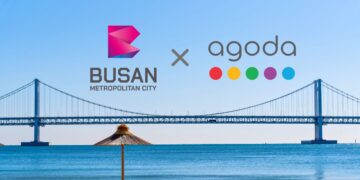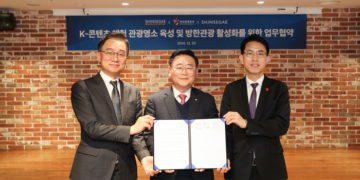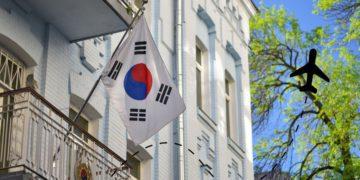APEC 2025 in Gyeongju marks a new era in how South Korea blends tourism, diplomacy, and regional development. From visa reforms to MICE expansion, the summit is shaping a new travel economy built on strategy and influence.
When world leaders descend on Gyeongju from October 31 to November 1, 2025, South Korea isn’t just hosting a summit — it’s staging a bold act of national positioning. APEC 2025 Korea offers Seoul a chance to fuse diplomacy and destination, turning tourism into a central pillar of its soft-power and regional development playbook.
APEC 2025: Summit Meets Strategy
The event, APEC 2025 Korea, will be hosted in Gyeongju at the Hwabaek International Convention Center. It marks South Korea’s second time leading the forum (the first was in Busan, 2005). Under the summit’s motto, “Connect, Innovate, Prosper”, the host country has framed its priorities around integration, digital transformation, and inclusive growth.
Rather than viewing APEC as a one-off diplomatic event, Seoul is treating it as a catalyst for reshaping tourism strategy. In March 2025, the government publicly stated its intention to leverage APEC to boost regional tourism and to use the summit to spotlight less-visited provinces around Gyeongju. Local transport and tourism infrastructure upgrades are already in motion in North Gyeongsang province to support this aim.
Shaping Mobility: Visa Access as a Policy Lever
One of the most visible tourism policy moves tied to APEC is the pilot visa-free entry for Chinese tourist groups, effective September 29, 2025, through June 2026. The program allows groups (three or more tourists) from mainland China to stay visa-free for up to 15 days.
The timing is deliberate: it coincides with China’s Golden Week holiday in October, and straddles the APEC summit period. The policy is framed as a stimulus for tourism recovery, especially in the shopping, hotels, and entertainment sectors that rely heavily on Chinese visitors. Notably, the visa waiver is restricted to group tourists organized via authorized agencies — individual travelers are excluded.
This scheme underscores a deliberate shift: mobility policy is no longer a passive enabler, but a tactical instrument to direct visitor flows, support regional economies, and integrate diplomacy with tourism outcomes.
Elevating MICE & Business Travel Dynamics
Beyond leisure tourism, Seoul is pushing to transform South Korea into a MICE (Meetings, Incentives, Conferences, Exhibitions) powerhouse ahead of APEC. The Korea Tourism Organization (KTO) has already engaged in global roadshows, for example, in the Philippines, to promote Korean MICE capabilities and attract event planners. As part of that, Korea launched its “Gyeongbuk Plus Special Assistance Program,” providing financial incentives to approved group tours in Gyeongbuk province.
In parallel, the 65th APEC Tourism Working Group meeting was held in late July 2025 at Songdo Convensia in Incheon, co-hosted by Korea’s Ministry of Culture, Sports & Tourism and KTO. That event acts both as symbolic proof of Korea’s readiness and as a base for cross-economy coordination around tourism cooperation.
These moves aim to ensure that the APEC summit is not just about diplomacy, but also about making Korea a hub for business travellers, event organizers, and international associations long after the summit ends.
Regional Activation: Making Gyeongju the Focal Point
Hosting APEC in Gyeongju is a deliberate gamble in regional development. Rather than clustering all summit activity in Seoul, the government is pushing to distribute economic gains outward. Gyeongju’s heritage appeal provides narrative heft, while infrastructure upgrades in mobility (roads, connectivity) are being tied directly to the summit’s success.
This regional activation is not without challenges. Legacy tourism flows are heavily Seoul-centric, and balancing visitor volume, local capacity, and preserving cultural character will require planning post-APEC.
Risks in the Spotlight: Political Backlash & Perception Management
A bold tourism-diplomacy strategy also carries risks. With the visa-free entry for Chinese groups has come domestic backlash. Far-right protests targeting Chinese visitors emerged even before the policy’s launch, raising fears of reputational damage. In response, President Lee ordered a crackdown on anti-Chinese rallies, warning they would harm national image and economic interests.
These tensions may test how tourism diplomacy holds under domestic strain. The government will need deft messaging and safeguards to maintain visitor confidence — especially during the high-stakes APEC weeks.
What APEC 2025 Could Change for Korea Travel
APEC 2025 is shaping up to be more than a diplomatic gathering — it’s a pivot point. It places tourism policy at the heart of statecraft: visa regimes become levers, infrastructure becomes diplomacy, and regions become global stages.
From here, industry watchers should monitor:
- Whether the Chinese visa-free pilot is extended or expanded post-June 2026
- How KTO and regional governments integrate summit gains into long-term tourism strategy
- Private capital flow into MICE venues, boutique hotels, and mobility services in Gyeongbuk
- Visitor feedback and brand perception data during the summit window
If executed with care, APEC 2025 could become the moment when tourism in South Korea graduates from becoming a sector to being a strategic diplomacy vector.
1,557 total views, 4 views today

















